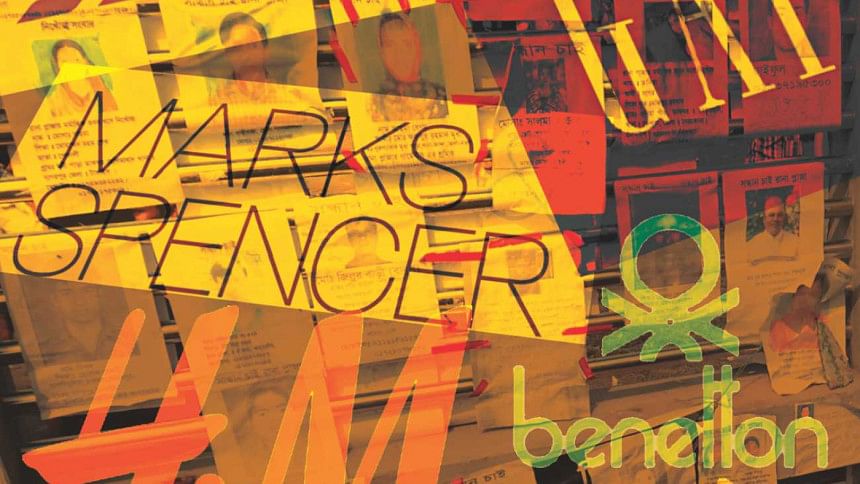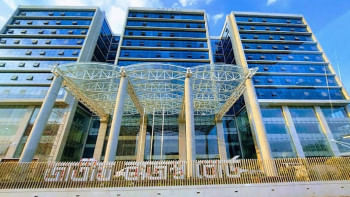Setting our priorities straight

The Rana Plaza collapse wasn't just the worst mass fatality disaster in the history of the garment industry; it was the worst mass fatality disaster in the history of all manufacturing. Through all the centuries that human beings have been making products in commercial buildings, and across all the countries where those goods have been made, there had never been a catastrophe as costly in terms of human life as Rana Plaza.
Yet for all its uniqueness, Rana Plaza was the product of the same dynamics that caused every other mass fatality incident Bangladesh's garment sector in recent years: The abject failure of the government of Bangladesh to fulfill its regulatory responsibility in the building safety arena. The abject failure of Western brands and retailers to step in to fill the regulatory gap the government had left, even as they repeatedly reassured their customers they were taking all necessary steps to protect the rights and safety of workers. The price and delivery pressure those brands and retailers recklessly placed on Bangladeshi factory owners and the willingness of those owners to ignore workplace safety rules in response.
Ruthless price pressure, irresponsible factory management, and lax regulation are a lethal combination.
Most disturbing is how easily Rana Plaza, and the Tazreen Fashions fire before it, could have been prevented. There were so many warnings, including the seven different fires and building collapses in 2005 and 2006 that collectively killed more than 200 workers. Then there was the Garib & Garib fire in February of 2010, with 21 deaths, and the fire at That's It Sportswear in December of that year, which killed 29.
After that fire, unions and international labour rights organisations proposed a binding agreement to finally carry out the programme of safety inspections and renovations necessary to put an end to the parade of horrors. In April of 2011, the so-called “stakeholders” all convened at the BGMEA to discuss this concept, including the call for brands and retailers to help pay the cost of essential renovations. The brands and retailers, led by Walmart, rejected the concept out of hand.
One major retailer argued it did not need such a programme, because it had made a great educational video and was using it to train workers on fire and building safety. It is too bad that retailer couldn't train workers how to walk through flames or how to dodge collapsing floor slabs.
In end, only two corporations signed a building safety agreement before Tazreen and Rana: PVH, the owner of Calvin Klein and Tommy Hilfiger, and the German retailer Tchibo. Because there were so few signers, that agreement, the precursor to the Bangladesh Accord, could not be implemented.
What if other brands and retailers had joined PVH and Tchibo? What if a massive inspection programme like the Accord, with mandatory safety renovations, had been launched not in the wake of Rana Plaza, but in 2011? Rana and Tazreen would have been inspected, the grave hazards in both buildings exposed. Rana would likely have been forced to close, Tazreen pressured to fix faulty wiring and install fire doors.
Instead, the brands and retailers went on exactly as before. They continued to mislead consumers in Europe and North America, claiming that they were carrying out thorough inspections in all their factories. In reality, none of them ever bothered to hire qualified safety engineers or to include in their audit protocols the safety issues that actually mattered, like fire doors and the strength of structural columns. So Walmart's auditors never noticed that Tazreen had no fire exits. And the auditors for Benetton and Children's Place never checked the structural integrity of the Rana building.
How is it possible that hundreds of leading global corporations, each possessed of vast financial resources and thousands of highly educated personnel, failed, without exception, to carry out minimally competent building safety inspections in their factories in Bangladesh? How is it possible that these brands and retailers made the Bangladesh garment industry, consisting of thousands of factories in multi-story buildings operating in rank disregard of the national building code, the second largest garment industry in the history of the world? How can it be that none of these companies ever sent a competent fire safety engineer into a supplier factory in Bangladesh before the Tazreen fire? How is it possible that none of them ever sent a competent structural engineer into a supplier factory before Rana?
There is only one plausible explanation: the safety of Bangladeshi garment workers was never a high enough priority within any of these corporations to cause their senior executives to take a hard look at the adequacy of their factory monitoring systems. So nothing changed.
What finally forced the brands and retailers to rethink their approach was the massive global media coverage of the Rana collapse, which caused enormous embarrassment to brands and retailers sourcing from Bangladesh. Top executives of these corporations may not have been that concerned about the risk to workers, but they were capable of recognizing the risk to their brand reputations.
Thus, the Accord became a reality and, after that, the copycat Alliance. With the Accord leading the way, competent safety engineers were hired and sent into the factories, all of the hazards were catalogued and publicly reported, and pressure brought to bear on the factory owners to make their buildings safe.
It has not been easy. There has been a great deal of foot-dragging by brands and factory owners alike. The brands have not provided the level of financial support to aid the factories with renovation costs that the Accord envisioned. However, for all of the obstacles, massive numbers of safety improvements have been implemented and factories employing millions of workers are now far safer than they were in 2013.
Will the outstanding safety renovations be completed? Will other fundamental worker rights problems in Bangladesh be meaningfully addressed, including repression of the right to organise and of peaceful worker protest, and including a minimum wage too low for workers to adequately feed, clothe and house their families?
The answers to these questions depends on a handful of key factors: whether labour rights activists can keep the pressure on Western brands and retailers; whether foreign government – and particularly the European Union – are willing to hold the Bangladesh government accountable to its labour-related trade obligations; and whether Bangladeshi garment workers continue to mobilse and organise.
Scott Nova is Executive Director of the Worker Rights Consortium (WRC)

 For all latest news, follow The Daily Star's Google News channel.
For all latest news, follow The Daily Star's Google News channel. 



Comments